Marilyn Hamilton's Blog, page 40
July 24, 2018
Imagining Integral City Contributions to Designing Urban Ecovillages
At the Global Ecovillage Network European Conference 2018, Integral City was invited and inspired to join conversations about the emergence of Urban Ecovillages (UE).
 Definitions & Types
Definitions & TypesGEN defines an ecovillage as a community that sustains and regenerates its social and natural environments. And Urban Ecovillage is such a community that is located within, adjacent to and/or emergent from an urban setting.
Integral City would probably further refine an Urban Ecovillage, depending on the type of city or urban setting to which an UE is connected. Is it Traditional, Smart, Resilient or Integral? Recognizing this typology would no doubt assist in aligning the purpose of an UE and its Integral City alliance.
Dimensions & Processes
WHAT: As described in an earlier blog, the 4 dimensions of an eco-village, can help discover the 4 dimensions (and the resulting assets and needs) of the ecovillage. Integral City processes that parallel this include the Discovery Process of assessing the city’s 12 Intelligences. Both maps help to reveal the WHAT of an action inquiry (as described in Book 2).
WHO: Integral City would also bring to the table the 4+1 Voices of the city/village: citizens, civic managers, business/innovation and civil society. This would enable the whole system to be in the room when moving beyond WHAT to SO WHAT and NOW WHAT?
WHY: In order, for discussions to be aligned to the highest good for all, Integral City would propose the use of the Master Code – this would align circles and scales of care: The Master Code calls both a village and an urban centre to align: Care for Self, Care for Others, Care Place(s) and Care for Planet. This attention to placecaring is essential for the success of placemaking. It reveals the purpose of the village and the urban centre and aligns them both with caring for the eco-region and the planet. It frames the strategies that emerge from the exploration of SO WHAT and NOW WHAT?
HOW: With an alignment of WHO, WHAT and SO WHAT, the NOW WHAT stage would design a strategy for an Urban Ecovillage. This process would co-locate the GEN mandala on the 5 Maps of Integral City and apply the 5 sets of Integral City Intelligences ((as described in Book 2, Sections VI and VII Designing Sustainable Communities, and Book 3, Chapter 15 Capacity Building at the City Scale) as a framework for designing the next natural steps for designing an Urban Ecovillage.
It is exciting to think that connecting Urban Ecovillages and Integral City Meshworks may open up new opportunities for putting the village back into the city and bringing the whole system framework of Integral City design to enable ecovillage prosperity. We invite anyone whose interests are piqued to connect for further explorations.
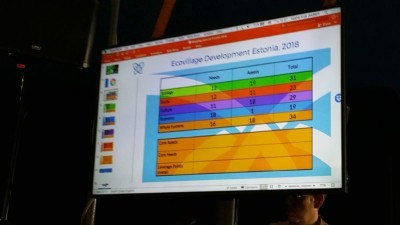
Witnessing 4 Dimensions of an Ecovillage
In early July Integral City attended the Global Ecovillage Network (GEN) European Conference in Lilleoru Estonia (near the capital Tallinn).
We participated in several uses of the Ecovillage Playing cards and mandala, facilitated by GEN ED Kosha Joubert and Education Director, Anna Kovasna.

This card-set has been co-designed by Gaia Education and GEN to enable a group of ecovillagers to quickly discover core dimensions that need to be addressed in designing ecovillage practices for sustainability and success.
Three core practices that most ecovillages embrace are:
Engaging local participatory processes.
Integrating social, cultural, economic and ecological dimensions within a whole systems approach to sustainability and regeneration.
Co-creating conditions for restoring and regenerating social and natural environments.
The playing cards unpack these practices into an (integrally-informed) mandala that enables participants to map out the assets and needs of each of the 4 dimensions, and the system as a whole:
Cultural
Social
Economic
Ecological
Whole System
We witnessed how easy it was for participants to use the integral map to assess assets and needs with local “voting” tools like sticks and stones. The picture that emerged then allowed for a discussion of the ecovillage situation and create a story shared by all. That provided a strong platform from which to design intentions, agreements and strategies for ecovillage operation.
July 23, 2018
Integral City Talks on IDA Radio, Tallinn Estonia
In July 2018 Marilyn Hamilton visited Tallinn, Estonia. Marilyn talks with Estonian urban activist and imagineer, Teele Pehk about the roots and branches of Integral City. They have a lively discussion about the following topics.
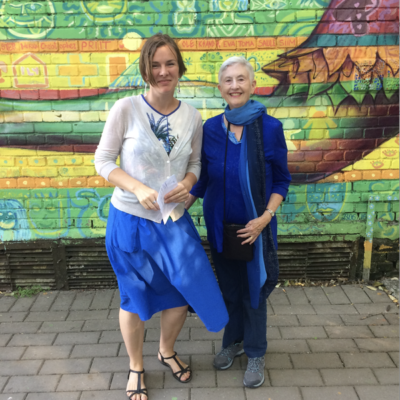
How she has developed her ideas from a small city in Canada near Vancouver; along with Seattle, Portland and San Francisco.
How the Baltic cities are waking up to interest in bringing consciousness and culture to their efforts with Smart Cities and Resilient Cities.
Why Integral City bases its assumptions about cities on James Lovelock’s Gaia hypothesis – that the earth is a living ecosystem.
How Russian monocities are recalibrating themselves to be Living Cities using the 4+1 Voices.
How Russian Living Cities plan to change 1000 cities by 2035.
How Eindhoven, NL recreated itself from a manufacturing city to a Design City.
How to gain traction for implementing SDG’s in cities.
The importance of learning the biomimicry lessons from bees.
To listen to the complete recording of the conversation: Click here.
July 7, 2018
How Can We See this Green-to-Yellow Transition Happening in (parts of) Society?
Currently, a Second Tier society doesn’t exist yet. But in some countries like The Netherlands and especially in the world-wide networks of Yellow people, something new is emerging. In my international calls with Integral Coaches, MondoZen practitioners and other integral people, immediately there is an intimacy, openness and understanding, we can easily listen to each other, ask powerful evocative questions, go deep and sometimes give wise advice without having met before. More and more of these networks are emerging like Integral City, The Hague Center (9) and of course the Integral European Conference meetings! It is as if we are speaking a new international language that connects and feeds us. Maybe it is still a tender flower, but hopefully it is a strong one and a kind of weed multiplying quickly. What might we see in these parts of society and the world?

Most societies are still functioning in the Traditional (Purple/Red/Blue) and Orange realms. The Netherlands is one of the Greener countries. The Green perspective believes in boundless possibilities and self-development for everyone. It is focused on good and open communication, including people, caring for each other, investing in ‘underdogs’. It strives for harmony, happiness and a good life for everyone and doesn’t like conflicts and painful measures. It cannot deal with (Red) aggression/action and dislikes (Blue) judgments, hierarchies and procedures. Green looks for solutions that fit its vision and takes the time to find them. ‘Polderen’ (seeking a compromise (particularly within a political context) in order to come to an agreement) is a typical Dutch word. Equality is a very important value.
As described earlier in this blog series (in the full version) we already saw that listening to all voices without discernment leads to stagnation in society. In order to progress, Green has to take the lead. And taking the lead at this moment in history means taking unpopular measures like abolishing petrol cars; diminishing the number of personal and business flights; changing eating patterns (less meat); buying sustainably made clothes; fast transition to renewable energy sources; looking for mixed strategies to deal with migrants; building energy-neutral greenhouses; lowering the power consumption in industry; stopping with using gas from Groningen; making sharp choices in any domain. We are confronted with difficult dilemma’s like:
– expensive surgical operations for a few healing many people with cheap medicines
– individual freedom of choice banning petrol, meat or guns
– admitting more migrants more costs and less public support
– better education higher public costs.
Of course this might arouse conflicts and disrupt harmony which Green doesn’t like. Another big obstacle is that implementing the Green agenda seems to become prohibitively expensive. So, Blue-Orange tends to take over again leading to more money-driven policies and more bureaucracy. (Wow!) How can this regression be transcended and how can we use the powerful Yellow tendencies in our society to progress to the Integral level and Second Tier?
To support society to enter Second Tier much needed steps can be taken like sharing knowledge about the evolutionary view, deep inquiry and slowing down.
Sharing knowledge
The first step in the transition to Integral is to recognize the value of all previous perspectives as we need all value systems integrated in a healthy way to function at a higher level. It means that people need to know about the integral map and that what is happening in the world, can be explained better by using this map. We must learn to observe what is going on from an evolutionary perspective.
Inquiry
Then, just like individuals need to get to know themselves in all their (developmental) layers, to discover what colours their shadows have, to deal with their oppressed and underdeveloped parts, to do their personal work with an open heart and develop their spiritual line in order to learn to live honestly and in peace with themselves and their fellow humans; similarly, organisations and societies have to take on the responsibility to do this deep work. We have to formulate inspiring purposes for policies and activities in all realms of society, including all citizens (this is one of the principles). E.g. the realisation of more sustainable energy systems is not only interesting for implementing a Green agenda, but can be very profitable for (new) enterprises and will provide new employment opportunities. We have to find out where new ideas and possibilities get stuck and how to get the stream flowing again. This can be compared it with getting the water under control: building dikes and bridges, making more space for abundant water, digging new canals, thinking about new flood defence strategies. We have to discover what views and actions are hindering the evolutionary progress of society and find out in which ways we can start rowing in the same direction. Often we have to learn to become humble and to wait for the moment that new openings become visible.
Slowing down
An important condition for inquiry and change is to slow down like is being done in the application of the U-process. CHE-NL is developing a new tool for meetings called the Development Forum in which we try to find answers to a specific question/issue starting with slowing down and speaking from our inner wisdom. We call it the Art of Second Tier Communication. Practicing slowing down and speaking from the heart is an excellent way of introducing the Integral perspective and can be done in many different situations. Slowing down opens the access to connection with all people, all beings, all things, the whole cosmos. The connection is always there but most of the time we forget it and tend to act from separateness. Slowing down facilitates deep listening to inner wisdom, surrender to what emerges, and organising in a natural way. Solutions then arise from the morphological field of endless possibilities.
Finally
Looking from the Integral Second Tier perspective creates more connectivity between people, more clarity about the next steps needed to solve our problems, more energy and action leading to concrete results based on dialogue with all parties involved. The Center for Human Emergence in the Netherlands (CHE-NL) wants to contribute to this transition from First to Second Tier together with all organizations and individuals who see the benefit of it. We already see in various places how this perspective works to transform organizations into places of purpose. Everybody’s personal development as an integral leader is important and needed to meet the current challenges. As SDi-scientist Dr. Don Beck says: “No more prizes for predicting rain, only prizes for building arks”.
Note:
(9) The Hague Center for Global Governance, Innovation & Emergence exists to help align necessary resources for the current human and planetary transition. This transition is, in its essence, about moving from separation and polarisation, towards coherence and complementarily. This same transition is playing itself out across all sectors — ecology, economy, and governance, to name a few key ones.
This series of Blogs on Transitioning from Green to Yellow by Leida Schuringa are extracts from a longer article which you can download here. This series includes the following:
The Transition from Green to Yellow: How to Really Make it Happen
Characteristics of the Yellow-Teal Perspective
How Can We See the Green to Yellow Transition Happening in Individuals & Groups?
Characteristics of an Integral (Yellow/Teal) Project
How Can We See this Green-to-Yellow Transition Happening in (parts of) Society?
Characteristics of an Integral (Yellow/Teal) Project
Based on our (limited) knowledge of and experience with the transition from First to Second Tier and what it means to think and act from the Yellow/Integral Perspective, we describe what an integral project would look like. It will be characterised by certain values, a specific structure, leadership and communication. Below are the results of a first brainstorm session.
 1. Values/principles/energy:
1. Values/principles/energy:– The Purpose of the project deals with the bigger whole: survival of humanity, the emergence of evolution and increasing awareness. More concretely, it is focused on sustainability, improving the quality of life, finding new solutions for urgent and complex problems, inspiring an integral spiritual life, improving the health of the Spiral for individuals, organisations and society.
– The Integral perspective is leading in the design, development and implementation of the project. It takes into account all previous value systems and integrates the advancing insights into new forms, products and cooperation.
– Emergence is the leading principle: observing the system, sensing what will be the next action, implementing that and observing again. Attuning to the connection that is already there.
– Other important principles are: starting from What Is; working from silence; adjusting the tempo to the DNA of the project; embracing differences; focusing on opportunities and possibilities (instead of on limitations); progressing step by step; sustainability in ecology, people and time. The project is focused on development and opportunities. AND-AND approach. Looking for win-win-win solutions (multi-value creation), like multiple goals in care for autistic youngsters, community building, new recreation opportunities and earning money. It’s all possible. The main question is: does it work?
– An integral project is embedded in or oriented to influencing the bigger context. The focus is on having impact. Cooperation with higher structures from the beginning is important. The project can start as a pilot or an experiment, but it has to be connected with other organisations and governmental bodies to be able to spread the results of the project and influence national policy.
2. Organization/structure:
– The project is organised using the three Teal principles of Laloux: purpose, self-management and wholeness.
– The first step in the project development is the application of the Stepping Stones of the Chaordic Design process:
1. Describe the Need, What is the necessity for and the uniqueness and DNA of this project? Why do you want to start it?
2. Formulate Purpose and Principles,
3. Think about People, Concept, Limiting Beliefs and Structure.
– The project is always situated between Chaos and Order on the edge of not-knowing, between dreams on one hand and concrete goals on the other. In the interaction between both sides, new ideas will be invited and emerge. This is an ongoing process, ever developing and renewing, also during the implementation. Again, again and again… This open way of working is new to most people. They are used to working in one direction and want to have certainty. Here the Purpose and Principles provide the focus and grounding. It is all about trust in the process and focus on the harvest.
– All First Tier value systems are present and active in a healthy way. Often the desire of the project owners is to feel free and creative (Red, Green and Yellow) and we can see resistance to Purple (create connection), Blue (structures, procedures) and Orange (be effective and efficient). It is a challenge for them to include all.
– Use transparent governance structures like Holacracy: a clear structure with clear roles connected with accountabilities. Look for people who can fulfil the roles that are defined in service to the common purpose. Strive for consent (workable not-perfect solutions) instead of consensus.
– Attention given to results and relations is balanced.
– The project development is based on the Purpose and Principles. A clear vision, concrete visible goals, a defined project strategy and steps for the short term and clear choices is helpful to make the start. A continued focus on Purpose and Principles gives the flexibility and stability to adapt the strategy when circumstances and opportunities are changing.
3. (Personal) leadership:
– The project leaders – the persons who are in charge – need to have developed into Yellow. That is an important condition for an integral project (Laloux). The founders also need ‘shaper’ qualities to create a successful project. A Yellow project lead or advisor is not only a good process manager, but also has the substantive knowledge to make the project a success.
– Other people who are active in the project may function from other value systems. In fact, people with talents in all value systems are needed. A financial person better be well versed in Blue.
– The leaders must be able to involve people who are functioning from other value systems, using focused, clear language translated in all value systems, and to deal with the conflicts that will arise. In general, tensions are needed to progress the organisation as they hold information on what is not working.
– All people involved have to be willing to communicate in an open way and to reflect on their behaviour. Personal development is an ongoing process and needs facilitation. An important question for all participants is to get clear: what do I need personally and what do I have to learn to contribute to this project? An integral project is built on conscious people who can function as an instrument in service of something bigger than themselves.
4. Ways of communication fitting in Second Tier:
Integral communication asks for new methods and working forms like:
– Use moments of silence to stop the exchange of words, to become grounded in the body and then let the words emerge from a deeper wisdom
– Appreciative Inquiry; Appreciation of what is and of the powerful elements which are already present. Start from the resources and qualities which are available.
– The capacity to formulate one’s stance clearly and listen carefully.
– Letting one’s contribution be guided by the larger interest and not by personal ego-controlled interest. (8)
– Meet each other and all differences with respect, wonder and joy. Don’t criticize, but build upon the contribution of the other attuning to the whole.
– As a leader: speak in the language of all value systems in order to be understood by all participants.
– Always listen and speak from an open, curious attitude
Note:
(8) See http://www.belbin.com/about/belbin-te...
This series of Blogs on Transitioning from Green to Yellow by Leida Schuringa are extracts from a longer article which you can download here. This series includes the following:
The Transition from Green to Yellow: How to Really Make it Happen
Characteristics of the Yellow-Teal Perspective
How Can We See the Green to Yellow Transition Happening in Individuals & Groups?
Characteristics of an Integral (Yellow/Teal) Project
How Can We See this Green-to-Yellow Transition Happening in (parts of) Society?
How Can We See the Green to Yellow Transition Happening in Individuals & Groups?
Not many people in the world have yet had the opportunity to develop towards the Integral Perspective. In the Netherlands, at this moment, as a rich country which has developed Orange-Green and is expressing a relatively healthy Green, several Yellow individuals and organisations can be found. In this section I will describe various characteristics of Yellow/Teal/ Integral persons. What has been changed in the transition from Green to Yellow?
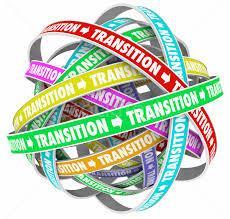 1. How can we see this transition happening in individuals?
1. How can we see this transition happening in individuals?When moving through the Green perspective people get to know themselves better and learn to communicate with each other in an open and inclusive way. They struggle with their ego. They are involved with themselves and with what is happening in the group. Green emphasizes the importance of its own perspective (personal growth, solidarity, harmony, sustainability, open communication, love, etc.). And also the importance of the Left (internal) side of the 4 quadrants of Wilber: Green loves the personal inner quest (UL) and connecting with other people (LL), but doesn’t like the systematic view and rules (LR) and is not always practical in implementing actions (UR). Green has a marked preference for its own values, criticizes other perspectives like the Orange one and especially rejects the Blue and egoistic/intolerant behaviour (Red-Blue).
During the transition from Green to Yellow the appreciation for all previous perspectives grows, especially for the Blue value system. Yellow looks at the bigger picture, can see the added value of each of the previous perspectives, and how the integration of the healthy aspects of all value systems leads to advancing insights and new forms of products and cooperation. Yellow has an external focus and wants to achieve concrete results.
Functioning from the Yellow (Second Tier) perspective one is an instrument in service of something that is greater. The goal is not more power, wealth or fame. The contribution is intended to serve the future and the survival of humanity as a whole. As an instrument one is able to formulate what is needed based in not-knowing: “Thy will, not my will, be done” Following a path of one’s own, these people have the courage to endure rejection and can deal with the unavoidable fear. They know themselves, they know where they err and are able to correct that. They start living their soul’s destiny.
To be able to develop till this level and to show up at this level, it is important to do our work in Growing Up as well in Waking Up. During our path of awakening we will learn and experience that life is not about (Material) Happiness as the Orange and Green perspectives are trying to promote.
2. How can we see this transition happening in groups/organisations?
Only a few groups and organisations function at the Integral/Yellow/Teal level. Frederique Laloux did good work inquiring into and spreading the idea of Teal organisations. For the new generation of innovative entrepreneurs, Teal works like a magnet. However, to be able to function from Teal/Yellow it is needed that the previous levels in First Tier are fully developed and healthily integrated in the organisation. We can see that in many cases of enthusiastic new organisations and businesses which desire to be Teal, the Traditional (Purple, Red and Blue) and sometimes the Orange perspectives are not yet balanced enough.
The transition starts from the Green level. The Green postmodern organisation mainly looks from one perspective, and solutions for problems are found within this framework. It is focused on relations, harmony, personal growth, dealing with emotions, the group process and mutual relations. Understanding and explaining negative behaviour and events gets a lot of attention. It is felt important to listen to everyone and to take time for exchange of experiences, feelings and opinions. The ideal is to take decisions by consensus. Green likes equality and dislikes power. Often the result is an unclear and hidden power structure and the consensus decision making process is time-consuming. The vision for the future of the organisation depends on this process. What can we observe, what has been changed in the transition from Green to Yellow?
During the transition to Second Tier a tangible energy switch occurs towards a broader perspective and deeper connection. The focus becomes more external and oriented on tasks and results. Choices are made. As a consequence, more conflicts will arise and harmony will be disrupted. Working for the whole might require unpopular measures. There is a growing insight that not all information and opinions are correct and that a clear view is needed to progress.
Characteristic for the Yellow perspective is emergence: observing and sensing how the system moves, then taking the next step, observing and sensing what the effects are, then taking the next step, and so on. Starting interventions in social systems anywhere and following it everywhere. The general future direction is clear and connected to the survival of humanity. Personal development (growing up), spiritual development (waking up) and staying alert for ego stuff (cleaning up) is part of the organisation and the individuals who are working in this context. This development of consciousness is needed to become a good instrument in service of the whole.
The Yellow perspective is consciously operating from the deeper connection that already exists. It looks from various perspectives and sees the potential. Attention to results and relations is balanced. Differences between people are recognized. Dominant hierarchies (based on external characteristics) are seen as wrong, but the hierarchy of developed wisdom and personal growth is seen as necessary for progress. To achieve results various kinds of power are used (CAPI – Coalesced Authority Power & Influence) and elites are embraced instead of broken down (as Green does). Transparent forms to lead the organisation like Holacracy are adopted to transcend First Tier organisational structure and culture. Decision making is based on substantial objections and looking for a workable next step.
This series of Blogs on Transitioning from Green to Yellow by Leida Schuringa are extracts from a longer article which you can download here. This series includes the following:
The Transition from Green to Yellow: How to Really Make it Happen
Characteristics of the Yellow-Teal Perspective
How Can We See the Green to Yellow Transition Happening in Individuals & Groups?
Characteristics of an Integral (Yellow/Teal) Project
How Can We See this Green-to-Yellow Transition Happening in (parts of) Society?
July 6, 2018
Characteristics of the Integral/Yellow/Teal Perspective
What does it look like when this momentous leap will happen and when the transition from Postmodern/Green to Integral/Yellow, from First to Second Tier, becomes reality? Life in Second Tier has Ken Wilber waxing lyrical. “We are heading towards that point where Integral/Second Tier will be the Leading Edge. And the impact on the world is going to be nothing less than shocking. We never have had a shift in a level and a tier. We don’t even know what that will look like. The change could be so dramatic that it will be almost unrecognisable….We are going to have singularities not only in the exterior events like technology but also in interior events like our culture and how we actually view and interpret the world. And the most noticeable thing about Second Tier is that it is very embracing of all levels. And sees them all as having some sort of important role to play in human gross development and evolution. We have never had a society where the leading edge values said: whatever you do, make sure you include that person. We always have had societies that said: whatever you do, keep them out”7.
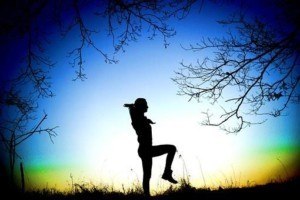 The main characteristics of the Integral level are:
The main characteristics of the Integral level are:– Making choices and focusing on a specific direction (formulate purpose and principles). Clear choices based on what is more true and of more value.
– Discerning between what is better for society as a whole and the process of evolution, and what leads to regression. The collective interest and progression are more important than individual interests or profit.
– Important principles are: integrity, inclusiveness, sustainability, effectiveness, including and transcending all previous levels, flexibility, attuned to the greater whole.
– Sometimes painful measures are needed. To progress and enter a new level, as an individual we have to move out of our comfort zone, perhaps feeling bad and suffering, in order to dare to jump into new waters of discovery. In the same way (Dutch) society has to move beyond the present luxurious, and for most citizens, comfortable situation. It is not exactly the way of ‘Verelendung’, but as long we are living in our small cocoon, nothing essential will change on behalf of the future of humanity.
– AND-AND approach. Including all perspectives, connecting the old and the new and choosing the best from all possibilities is the most productive way. Gauging the contribution of all previous value systems (traditional, modern and postmodern) towards new transcendent solutions. Connecting with all groups in society based on common values, norms and righteousness. A noticeable energy-switch is happening towards deep connection and widening of the perspective.
– Away from the emphasis on consensus and perfection towards finding workable and flexible solutions (good enough for now). More freedom, less rigidity in ‘how it has to be’. Focusing on What Works. Experimenting with new working forms, continuous evaluating of policies and adapting flexibly to unexpected situations.
– Integral looks for multidimensional value creation striving towards win-win-win situations (I win, you win and everyone wins). Example: a catering service for the residents of a nursing home, also functions as a nice small restaurant in its garden to make money to finance extra activities for the residents. Or a basic income for anyone under a specific income level financed by cuts in unnecessary control systems and the resulting cost reduction in health systems by less stress and diseases.
– Really entering the Integral level and Second Tier means that time and attention must be invested in increasing spiritual awareness beyond the more traditional forms of religion or postmodern spirituality (see Ken Wilber Modern Religion and Adi Da: Prior Unity). (6) (7) Waking up is equally important as Growing up. In the awakened Integral world things are as they are. No better, no worse. No personal likes or dislikes. However, there is a clear direction: finding innovative solutions for the complex issues of today’s world, creating opportunities for human beings to evolve and become who they essentially are, making the Spiral healthy at all levels and thus paving the way for evolution.
– In the Integral view people have equal value, but they are not the same. Some people are more developed, grown up and awake than others. They are involved in a process of constantly cleaning up their ego-stuff. They show up in their service in the world and for other people and their contribution to the evolutionary process. It is important to use this hierarchy of insight and wisdom. These people can inspire, stimulate and guide others to take their appropriate roles in society at their own level.
– Lifelong learning is important. Experiencing astonishment and pleasure in what is new and unknown, will motivate people to invest in continued education. Learning life skills includes how to communicate with others in a safe, open and effective way and how to take one’s own responsibility. Renewed educational structures and simple personal development programs for everyone can create responsible and capable citizens who can build the future of society together.
– Integral beliefs in focused growth in all domains within certain boundaries and based on positive human values, Example: the Doughnut Economy envisioned by Kate Raworth.
Notes:
(6) In Spiral Dynamics, this first Second Tier level got the colour of Yellow. Ken Wilber calls it Teal or Integral.
(7) See https://soundcloud.com/superhuman-os A Brief Introduction To Second Tier
This series of Blogs on Transitioning from Green to Yellow by Leida Schuringa are extracts from a longer article which you can download here. This series includes the following:
The Transition from Green to Yellow: How to Really Make it Happen
The Transition from Green to Yellow: How Can We Really Make it Happen?
This series of blogs on the Transition from Green to Yellow is by Guest Contributor, Leida Schuringa. Leida is a coach, author and SDi-trainer located in The Netherlands. She is very interested in applying SDi on societal issues. She worked in the non-profit sector and international development (at this moment in projects in Malawi and Czech Republic) and is involved in the Center for Human Emergence, Netherlands (CHE-NL). She has written books about project management, handling diversity and community empowerment. Her passion is to contribute to cooperation between people from many different backgrounds.
 The Problematique: Why it all matters
The Problematique: Why it all mattersThe evolutionary process seems to have fallen into regression (example: the election of Trump). Ken Wilber explains (1) that Green Postmodernity got stuck and didn’t pick up its role as the next ‘Leading Edge’, because of its excessive view of subjectivity, in which all is linked to context and truth doesn’t exist. In the extreme, in Green nothing is more true and more of value than anything else. Because a clear vision and focused choices are lacking, many people fall into confusion and are looking for strong (Red) leaders.
Now what? Postmodernity has fulfilled her role in the development of the social welfare state, the increasing attention for sustainability, communication, personal growth and solidarity with others. According to the theory of evolution (like Spiral Dynamics integral), the next step is the transition to integral thinking, integral acting and integral (personal and collective) leadership. If this transition from the Green postmodern to the Yellow integral perspective stagnates, the risk of chaos and regression is huge. Available solutions to actual and future problems (e.g. to realize the Sustainable Development Goals) cannot be implemented because we need the integrated benefits of all previous value systems to find requisite solutions for today’s complex problems.
If the transition succeeds, we will see people, organizations and societies take the lead based on human-oriented openness and a clear transcending view with a capacity to integrate differences into innovative solutions. These leaders are integral thinkers and actors. They are no longer motivated by their own interests or only one perspective, but are able to see what is functional for the survival and even flourishing of humanity as a whole. Beyond polarization.
Note 1: See Ken Wilber: Trump and the post truth world, 2017
This series of Blogs on Transitioning from Green to Yellow by Leida Schuringa are extracts from a longer article which you can download here. This series includes the following:
The Transition from Green to Yellow: How to Really Make it Happen
Characteristics of the Yellow-Teal Perspective
How Can We See the Green to Yellow Transition Happening in Individuals & Groups?
Characteristics of an Integral (Yellow/Teal) Project
How Can We See this Green-to-Yellow Transition Happening in (parts of) Society?
The transition from Green to Yellow: How to really make it happen
This series of blogs on the Transition from Green to Yellow is by Guest Contributor, Leida Schuringa. Leida is a coach, author and SDi-trainer located in The Netherlands. She is very interested in applying SDi on societal issues. She worked in the non-profit sector and international development (at this moment in projects in Malawi and Czech Republic) and is involved in the Center for Human Emergence, Netherlands (CHE-NL). She has written books about project management, handling diversity and community empowerment. Her passion is to contribute to cooperation between people from many different backgrounds.
 The Problematique: Why it all matters
The Problematique: Why it all mattersThe evolutionary process seems to have fallen into regression (example: the election of Trump). Ken Wilber explains (1) that Green Postmodernity got stuck and didn’t pick up its role as the next ‘Leading Edge’, because of its excessive view of subjectivity, in which all is linked to context and truth doesn’t exist. In the extreme, in Green nothing is more true and more of value than anything else. Because a clear vision and focused choices are lacking, many people fall into confusion and are looking for strong (Red) leaders.
Now what? Postmodernity has fulfilled her role in the development of the social welfare state, the increasing attention for sustainability, communication, personal growth and solidarity with others. According to the theory of evolution (like Spiral Dynamics integral), the next step is the transition to integral thinking, integral acting and integral (personal and collective) leadership. If this transition from the Green postmodern to the Yellow integral perspective stagnates, the risk of chaos and regression is huge. Available solutions to actual and future problems (e.g. to realize the Sustainable Development Goals) cannot be implemented because we need the integrated benefits of all previous value systems to find requisite solutions for today’s complex problems.
If the transition succeeds, we will see people, organizations and societies take the lead based on human-oriented openness and a clear transcending view with a capacity to integrate differences into innovative solutions. These leaders are integral thinkers and actors. They are no longer motivated by their own interests or only one perspective, but are able to see what is functional for the survival and even flourishing of humanity as a whole. Beyond polarization.
Note 1: See Ken Wilber: Trump and the post truth world, 2017
This series of Blogs on Transitioning from Green to Yellow by Leida Schuringa are extracts from a longer article which you can download here. This series includes the following:
http://integralcity.com/2018/07/06/the-transition-from-green-to-yellow-how-to-really-make-it-happen/
http://integralcity.com/2018/07/06/characteristics-of-the-integral-yellow-teal-perspective/
June 28, 2018
Integral City Reflective Organ – June Solstice 2018: Evolutionary Allies Placecare & Placemake the Human Hive

This newsletter is published quarterly using a cycle of perspectives on the Integral City viewed from: Planet, People, Place and Power. The theme of this issue is People.
Designing on, with, and as the Integral City derives from our understanding of the developmental capacities that evolve in the people who act as designers. In the Smart City those designers are typically technically trained professionals and experts like architects, engineers, city planners, and information technology (IT) experts. Their designs are focused on the city as an external object or artefact over which they have expert control. In the Resilient City their designers embrace stakeholder input, so they design with a design team lead by a Chief Resilience Officer (CRO) who seeks input from a broader group of contributors. In the Integral City those professionals and stakeholders transform themselves into designers who can experience, act, relate, and co-create as the living system that is the city itself.
Hamilton, M. (2017). Integral City Inquiry & Action: Designing Impact for the Human Hive. Tucson, AZ: Integral Publishers, p. 190
Integral City Finds Evolutionary Allies Who Placecare and Placemake the Human Hive in Europe
In the second quarter of 2018, Integral City’s 4 Voices have interacted with willing and often unlikely allies of evolution across central and northern Europe.
In April 2018, we started with Integral City’s 4.0 workshop on Co-Creating the Future of Cities at the Findhorn Foundation Ecovillage in Scotland. Our allies here were the 4 Voices of the Ecovillage who volunteered their time and interest, so our sixteen participants could learn how to divine the wisdom of Findhorn’s core principles: Deep Inner Listening, Co-creating with Nature and Work is Love in Action. The participants applied methodologies from All Quadrants in assessing their own development as leaders and used interviews and charrettes to feedback to the New Findhorn Association recommendations for engagement, governance and housing policy. (See below for Integral City 4.0 2019 training dates at Findhorn International Centre for Sustainability.)

In May we moved to Lake Balaton, in Hungary, where we joined 600 other participants at the Integral Europe Conference 2018. We renewed significant links with the Teal Organizations spotlighted by the Enlivening Edge in their track, facilitated by Integral City Core Member Alia Aurami.
Five Integral City practitioners, catalysts and meshworkers from our Community of Practice – Diana Claire Douglas, Anne-Marie Voorhoeve, Pieter Wackers and Maria Prieto plus Marilyn Hamilton, presented workshops, highlights and living system methodologies while interacting with learner/leader/researchers of Integral Practice from around the world.

In June the Netherlands Integral City Team visited Integral City Practitioners Patricia van der Haak and Carla Onderdelinden of Transitireisen (Transition Travels) in Arnhem, Netherlands. They introduced us to the “hood” where they have several projects – starting in the congenial surroundings of a local café. Then we visited a school which they are proposing become the centre for neighbourhood revitalization and retraining. As allies of energy evolution in the Netherlands – where the government is supporting all energy users to switch from non-renewable natural gas to renewable energy sources – Carla and Patricia hope to contribute to that sustainability goal by retraining residents of their “hood” to make the technical/equipment changeovers. As allies of evolution, they will build into their training not only new skills and systems, but in the process, wake up new mindfulness and community vibrancy in all 4 Voices.
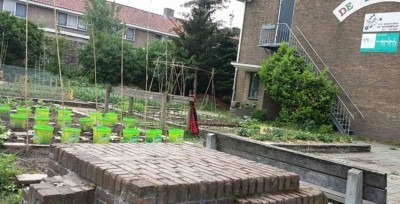
Following the June visit to that very practical set of projects, Integral City Netherlands Co-Founder, Anne-Marie Voorhoeve hosted a systemic constellation, lead by Diana Claire Douglas of Knowing Field Designs, particularly for Pavel Luksha – co-author of the newly released report on Educational Systems for Global Transformation (see below for link). Eight allies of evolution, participated in the systemic constellation, inquiring into the question: What bridge do we need to build to change from the old paradigm (of education, cities, human hives) to enable the new paradigm to emerge? The Knowing Field revealed to our Integral City researchers that the bridge would not be material, nor linear (in chronology or method) but that a new relationship to Time would be our most potent ally of evolution.
Also, in early June, Marilyn Hamilton travelled to Oulu Finland to give the keynote at the 6AIKA Conference. The invitation had come from Integral City 4.0 graduate, Taina Ketola who had been the city of Tampere’s lead collaboration facilitator for this project for the last four years. Marilyn stepped up to be an ally of Smart Cities and Resilient Cities – as the 6 cities in the 6AIKA group had been practising. Not surprisingly, the ally she offered was the Placecaring Ally who could join with their significant work in the Placemaking collaborations for technology and systems. (See link to video recording below under Free Resources.) Placecaring methodologies were welcomed as the natural next step for the cities to evolve into after completing their Agile Pilots and Smart City Prototypes. Civic managers were all curious to learn how to open hearts, expand mindsets and connect community.

At the end of June, Marilyn returned to Amsterdam for the Wemakethe.city Festival. Opening night was headlined by Kate Raworth and her “Doughnut Economics”. Most surprisingly the entire program for 2.5 hours was delivered by women (except for introductions from Amsterdam Vice-Mayor, and the Festival Director, and the interlude poet and guitarist entertainers). (For those who have recently despaired of the UN Status of Women endeavours this is an extraordinary event and milestone for (wo)manifesting feminine impact in the world.)
In Amsterdam, Integral City delivered a Preview to a tour of 10 Russians from Living Cities Forum Russia on June 20. Pieter Wackers, Anne-Marie Voorhoeve and Marilyn Hamilton gave the Russian tour group, the lenses of Integral City Intelligences and Voices to enjoy the festival and see Amsterdam. We participated in the rich program of the Festival for 5 days – visiting the Pakhuis, the Foodhallen, the Wasteland and the Vondalpark venues.
We remarked on the resonance of Toni Griffin’s “Just City Values” with Integral City values and the interactive methodologies of Action Research that she used at her workshop in the Pakhuis.
Later in the week, on June 22, Integral City also delivered a Placecaring/Placemaking workshop as part of the Festival and to celebrate the 10th Anniversary of longstanding allies and colleagues at Impact Hub Amsterdam’s Unlikely Allies Day.
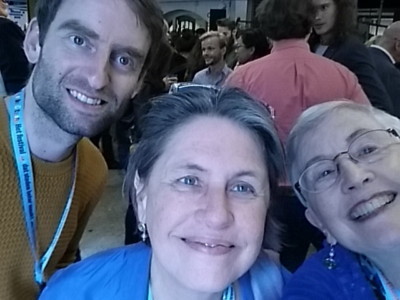 What We Learned
What We LearnedHere are some of the insights we have gathered from the multitudes of people that we interacted with across Europe in the last quarter:
The time is ripe for Integral City’s 4 Voices and Intelligences of Care, Consciousness & Culture to take active roles in city evolution.
The 4 Voices of the City make a difference to build capacity beyond the Smart and Resilient Cities.
Working as partners, teams and meshworkers, Integral City Practitioners amplify energies – their own and the cities they work with.
Integral City is connecting Practitioners, Catalysts and Meshworkers within cities, amongst cities, between countries and across regions.
The Planet of Integral Cities is becoming visible in the region of Europe as the political and eco-region of Europe’s cities evolve.
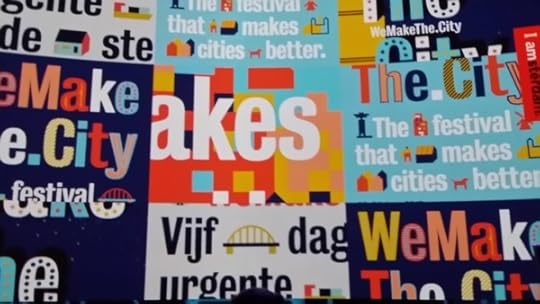 Lent’s The Patterning Instinct Reveals Sources of Brain & Cultural Diversity
Lent’s The Patterning Instinct Reveals Sources of Brain & Cultural DiversityIn 2017, we highlighted the importance of Geoffrey West’s book as a new exploration of the science of cities. In
Scale: The Universal Laws of Growth, Innovation, Sustainability and the Pace of Life in Organisms, Cities, Economies and Companies, West demonstrated the patterns that collective capacity makes possible through super-linearity – i.e. what enables economies of scale to enable increasing returns to scale – and sub-linearity – i.e. what causes collectives to reduce needs for infrastructure because of economies of scale. I noted that while West’s Science of Cities offers valuable and necessary quantitative analysis that contributes to understanding the emergence of cities, an equally rigorous approach to qualitative research is needed for exploring consciousness and culture in cities.
 In Jeremy Lent’s The Patterning Instinct: A Cultural History of Humanity’s Search for Meaning, we are transported through a detailed account of how culture has impacted the capacities of our brains – and vice versa. Moreover, Lent dares to explore how the history of western and eastern culture has led to fundamental differences in the worldviews of these cultures. Lent’s proposition that we have evolved brains with differences may explain the most basic variances in Chinese political choices (and explain why theirs is the longest continuous national culture on the globe) and Indo-Euro-American approaches. It may well explain why for west and east “never the twain shall meet”.
In Jeremy Lent’s The Patterning Instinct: A Cultural History of Humanity’s Search for Meaning, we are transported through a detailed account of how culture has impacted the capacities of our brains – and vice versa. Moreover, Lent dares to explore how the history of western and eastern culture has led to fundamental differences in the worldviews of these cultures. Lent’s proposition that we have evolved brains with differences may explain the most basic variances in Chinese political choices (and explain why theirs is the longest continuous national culture on the globe) and Indo-Euro-American approaches. It may well explain why for west and east “never the twain shall meet”.
The relevance for Integral City evolution is to understand that the cultural contexts for eastern and western cities may be so significantly different that the relationships between the 4 Voices, expectations for outcomes and even the desirability of certain visions or goals will demand alternative sensitivities and modalities for engagement. Lent seems to propose that the western predisposition for human development is to emphasize the individual as the locus of evolution, while in the east the locus appears to be the collective.
From a global perspective, this suggests that two different cultural ecologies have evolved and their capacity for interpenetration and interactivity may demand more complex strategies and depths of engagement than hitherto considered. The question that Integral City ponders, is how both individual and collective worldviews can avoid the tragedy of the commons in relating to Mother Earth? Might it be necessary for the very survival of humanity that individual and collective cultures learn quickly how to cross-focus cultural capacities on the natural environmental systems and ecologies that support us in our existence?
Integral City Evolutionary Alliances: Reports, Compositions, Interactions
Pavel Luksha, Co-Founder of Living Cities Russia has been part of another international team, Global Education Futures, researching how education systems need to change in support of creating the conditions for the new paradigm of cities, societies, global and even Kosmic consciousness. This report on Educational Systems for Global Transformation is very impressive – especially because it is multi-disciplinary, and the co-authors are trans-national/global (including Pavel Luksha, Joshua Cubista, Alexander Laszlo, Mila Popovich and Ivan Ninenko).
Pavel wrote on International Children Day: “Today, we proudly present the results of three years of works and dozens of sessions held by Global Education Futures. Please read our report on Educational Ecosystems for Societal Transformation, a work that summarizes contributions from over 500 educational leaders from over 50 countries, and over 40 interviews with some of the world’s prominent educators. Enjoy the summary and download our report – just click here.
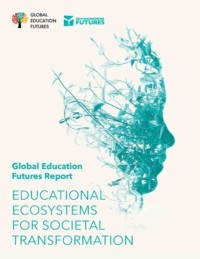
Steve Banks, Composer of the Integral Oratorio was a surprise co-presenter in the IEC2018 – programmed in the same timeslot with Integral City and Marilyn Hamilton. The unlikely alliance of Integral City and Integral Music gave participants two Kosmic Journeys: Marilyn offered a meditation from the city/landscape to the Kosmos; Steve offered a musical journey from the Big Bang through the history of the Universe to our present moment of Integral Emergence.
Steve is targeting to perform the Integral oratorio, ‘Unitas Multiplex’ in 2019 or 2020. (Click here for more information, sample movements and to contribute to the endeavour).
Evolve Magazine has interviewed Marilyn Hamilton on Integral City as an evolutionary force, for their new Radio Podcast. You can listen to the interview here. The inspiration of this interview has lead Evolve to create a whole upcoming issue on the city. A new interview has just been finished and will be published in the forthcoming issue. Stay tuned for publication date.
Tamarack Institute Workshops:
Turf, Trust, and Collaboration: Practical Tools for Building Trust
September 17, 2018 | Ottawa, ON
Lack of trust can have an immeasurable effect on your collaborative initiative, but little attention is paid to actions which build trust, create connections and deal with mistrust.
We’re offering the Turf, Trust, and Collaboration workshop to help tackle this problem. Liz Weaver will speak to trust building with ideas, tools and approaches to effectively engage diverse community partners and intentionally build trusting relationships and collaborative impact. Register here.
Cities Innovating to Reduce Poverty – Eastern Regional Summit
September 18-19, 2018 | Peel Region, ON
After a successful western regional gathering in Vancouver, we are bringing this event further east in Canada, welcoming communities from throughout Ontario, Quebec, Nunavut and the Maritimes! This summit will be hosted by Tamarack’s Vibrant Communities and the Region of Peel. Learn more and Register here.
Community Change Festival: 5 Approaches for Real Impact
October 1-4, 2018 | Toronto, ON
The Community Change Festival will bring together over 250 community changemakers to celebrate and build capacity around five interconnected practices vital to making real impact on complex challenges – Collective Impact, Community Engagement, Collaborative Leadership, Community Innovation, and Evaluating Impact. Register Here.
Integral City Book 3 is at the Publisher
Integral Publishers and Integral City are in the final stages of pre-publication for: Integral City 3.7: Reframing Complex Challenges for Gaia’s Human Hives.
Integral City is the third book in our Integral City series (hence the “3” in the new title). Like Books 1 and 2 it is dedicated to the 7th generation from now – the context for decisions that many indigenous people consider – hence the “7” in the title. Book 3 considers a series of apparently intractable challenges that all cities face because the world has become so complex that cause and effect are rarely directly linked. The exploration links to three themes that are eternal practices for designing a collective life that works for all life; namely, Caring, Contexting and Capacity Building. Send us an email if you would like an advance copy to review.
Here is some early feedback about the book:
The third volume [of the Integral City Series] may be the most ambitious and elegant of them all. It reframes the means with which we can bring our best intelligence to the hyper-complex challenges of the 21st Century in terms of care, context and capacity, a useful original system for understanding different crucial dimensions of what must be necessary for successful collaboration among a city’s stakeholders. Her writings renew hope by uncovering and highlighting many hidden opportunities for cities to lead the way toward a regeneration of human culture amidst our crises of fragmentation.
Terry Patten, Author A New Republic of the Heart, Co-Author Integral Spiritual Practise, Founder Integral Heart
For those who make the city, and – especially – cities, their live/work place par excellence, this is probably the most comprehensive, inclusive and balanced framing of their field – broadly, and integrally, defined – that they are ever likely to encounter. It focuses on reframing complex challenges, but the main – almost pre-requisite – challenge involves a fundamental reframing of their own, whole, selves, in a wholeness-privileging project like no other.
Ian Wight PhD FCIP GTB, Senior Scholar, City Planning, University of Manitoba
More integral thinking and strategies for the future of our cities from one of the planet’s best systems thinkers, Marilyn Hamilton.
Hazel Henderson, CEO, Ethical Markets Certified B. Corporation, author Mapping the Global Transition to the Solar Age and other books.
Upcoming Integral City & Constellation Events with People Purpose
Integral City has now been scheduled 2019 Training Events with Findhorn International Centre for Sustainability. Mark these dates in your calendar:
Just the Basics: The Map, The Mesh & the Human Hive – Sat 27 April 2019, 2pm – Mon 29 dinner
Integral City 4.0.2: Co-Creating Cities for the Future Now – Tues 30 April 2019 2pm – Fri 3 May dinner, dep Sat 4 May
Integral City 4.1: Integral City: Climates for Evolution Beyond Smart & Resilient Cities – Sat 14 September 2019 (no of days tbc)
April 20-26, 2019 Climate Change & Consciousness: Our Legacy for the Earth
This summit will be held at the Findhorn Foundation, Scotland. The event will feature some of the clearest and most passionate voices for the Earth ever gathered together in one place. Over the next year as the Findhorn Foundation counts down to the conference, they will post informative and inspiring articles and videos featuring the work of presenters and other climate change activists around the world. You are invited to join and support the event by following posts and updates. Get the full details here.
Celebrating People in the Planet-of-Cities in the Coming Quarter of 2018
June 21 marked the start of what Integral City calls the People Quarter (from June 21 to September 20). What people inspire you to ask questions? Who is taking action that has caught your attention? How does a new educational paradigm open you to new possibilities? Visit us on the our Integral City Website and Blog or post a comment about mentors, coaches and facilitators who are bringing together resources that connect on our Facebook page.
Meshful Blessings for our Planet of Cities from
Marilyn Hamilton and the Integral City Constellation Corps Team
PS Here are some FREE resources for nurturing our Planet and the Human Hive:
Videos
SMILE

Marilyn Hamilton's Blog
- Marilyn Hamilton's profile
- 3 followers



